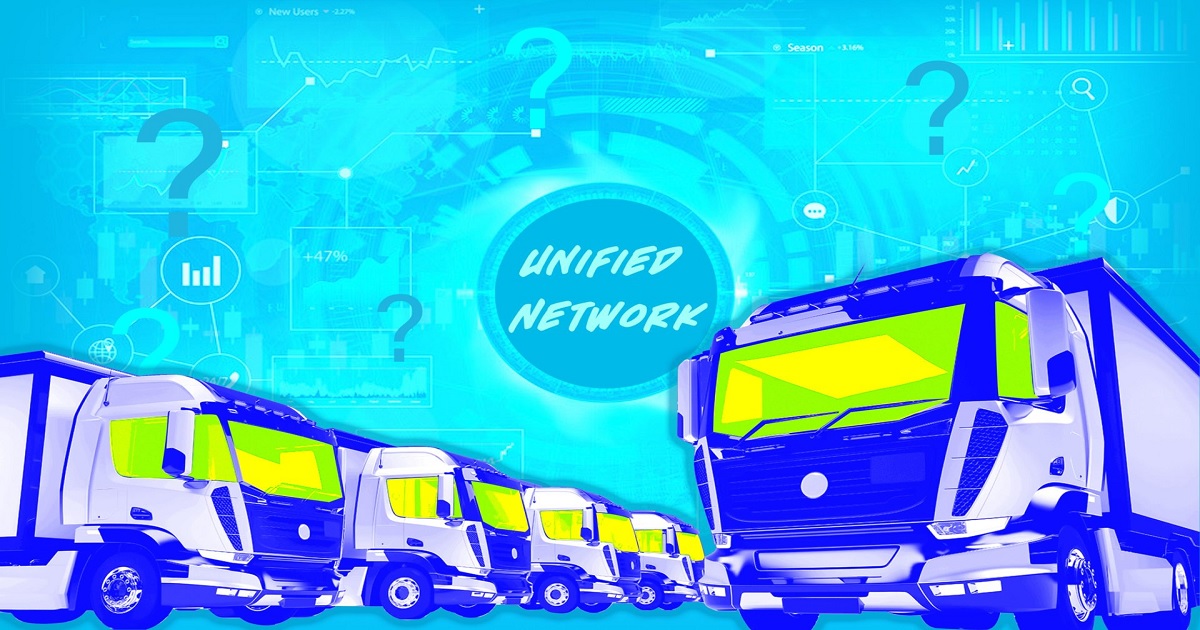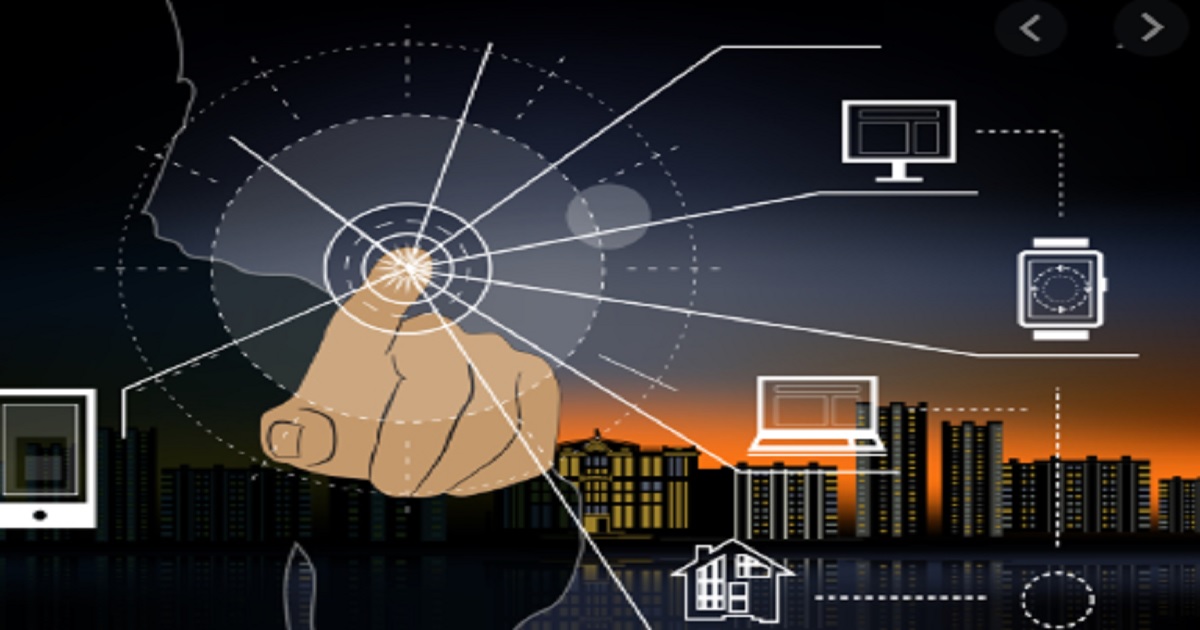
IoT Security
Article | July 17, 2023
Explore the IoT security solutions for critical issues and proactive solutions for the safe implementation of connected devices. Delve into cross-domain interactions for secure data storage.
Contents
1. Introduction
1.1 Significance of IoT Security for Safe Implementation
2. IoT Security Landscape
2.1 Emerging Threats in IoT Environments
2.2 Importance of Proactive Security Measures
3. Challenges Posed in IoT Systems
3.1 Cross-Domain Interactions
3.2 Denial of Service (DoS) Attacks
3.3 Insecure Interfaces and APIs
3.4 Vulnerable Third-Party Components
3.5 Safeguarding Data Storage and Retention
4. Solutions to Prevent Threats
4.1 Secure Integration and Communication
4.2 Traffic Monitoring and Analysis
4.3 Robust Authentication and Authorization Protocols
4.4 Patch Management and Vulnerability Monitoring
4.5 Access Control and User Authentication
5 Conclusion
1. Introduction
1.1 Significance of IoT Security for Safe Implementation
The significance of IoT connectivity and security for safe implementation is paramount in today's interconnected world. Some essential points highlight its importance at both the business and advanced levels. IoT devices collect and transmit vast amounts of sensitive data. Without proper security measures, this data can be intercepted, leading to breaches of privacy and potential misuse of personal or corporate information. Implementing robust IoT security ensures the protection of data throughout its lifecycle. Safeguarding Critical Infrastructure is crucial as Many IoT deployments are integrated into critical infrastructure systems such as power grids, transportation networks, and healthcare facilities. A breach in the security of these interconnected systems can have severe consequences, including disruption of services, financial losses, and even threats to public safety. IoT security helps mitigate these risks by preventing unauthorized access and potential attacks.
Mitigating financial losses, ensuring operational continuity and preventing IoT botnets and DDoS attacks contribute to security as IoT devices are often integrated into complex ecosystems, supporting various business operations. In recent years, compromised IoT devices have been used to create massive botnets for launching distributed denial-of-service (DDoS) attacks. These attacks can overwhelm networks and cause significant disruptions, affecting the targeted businesses and the internet infrastructure as a whole. Robust IoT security measures, such as strong authentication and regular device updates, can help prevent these attacks.
2. IoT Security Landscape
2.1 Emerging Threats in IoT Environments
Botnets and DDoS Attacks
Botnets, consisting of compromised IoT devices, can be leveraged to launch massive distributed denial-of-service (DDoS) attacks. These attacks overwhelm networks, rendering them inaccessible and causing disruptions to critical services.
Inadequate Authentication and Authorization
Weak or non-existent authentication and authorization mechanisms in IoT devices can allow unauthorized access to sensitive data or control of connected systems. This can lead to unauthorized manipulation, data breaches, and privacy violations.
Firmware and Software Vulnerabilities
IoT devices often rely on firmware and software components that may contain vulnerabilities. Attackers can exploit these weaknesses to gain unauthorized access, execute malicious code, or extract sensitive information.
Lack of Encryption and Data Integrity
Insufficient or absent encryption mechanisms in IoT communications can expose sensitive data to interception and tampering. Without data integrity safeguards, malicious actors can modify data transmitted between devices, compromising the integrity and reliability of the system.
Physical Attacks and Tampering
IoT devices deployed in public or accessible locations are vulnerable to physical attacks. These attacks include tampering, theft, or destruction of devices, which can disrupt services, compromise data, or manipulate the functioning of the IoT ecosystem.
Insider Threats
Insiders with authorized access to IoT systems, such as employees or contractors, may abuse their privileges or inadvertently introduce vulnerabilities. This can include unauthorized access to sensitive data, intentional manipulation of systems, or unintentional actions compromising security.
Supply Chain Risks
The complex and global nature of IoT device supply chains introduces potential risks. Malicious actors can exploit vulnerabilities in the manufacturing or distribution process, implanting backdoors or tampering with devices before they reach end-users.
2.2 Importance of Proactive Security Measures
Security measures are vital for ensuring the safety and reliability of IoT environments. Organizations can mitigate risks and stay ahead of potential vulnerabilities and threats by taking a proactive approach. These measures include conducting regular vulnerability assessments, implementing robust monitoring and detection systems, and practicing incident response preparedness. Proactive security measures also promote a 'Security by Design' approach, integrating security controls from the outset of IoT development. Compliance with regulations, safeguarding data privacy, and achieving long-term cost savings are additional benefits of proactive security. Being proactive enables organizations to minimize the impact of security incidents, protect sensitive data, and maintain their IoT systems' secure and reliable operation.
3. Challenges Posed in IoT Systems
3.1 Cross-Domain Interactions
Cross-domain interactions refer to the communication and interaction between IoT devices, systems, or networks that operate in different domains or environments. These interactions occur when IoT devices need to connect and exchange data with external systems, platforms, or networks beyond their immediate domain. Incompatibilities in protocols, communication standards, or authentication mechanisms can create vulnerabilities and potential entry points for attackers.
3.2 Denial of Service (DoS) Attacks
Denial of Service attacks are malicious activities aimed at disrupting or rendering a target system, network, or service unavailable to its intended users. In a DoS attack, the attacker overwhelms the targeted infrastructure with an excessive amount of traffic or resource requests, causing a significant degradation in performance or a complete service outage. Protecting IoT devices and networks from DoS attacks that aim to disrupt their normal operation by overwhelming them with excessive traffic or resource requests becomes challenging. The issue here lies in distinguishing legitimate traffic from malicious traffic, as attackers constantly evolve their techniques.
3.3 Insecure Interfaces and APIs
Insecure interfaces and application programming interfaces (APIs) refer to vulnerabilities or weaknesses in the interfaces and APIs used by IoT devices for communication and data exchange. An interface is a point of interaction between different components or systems, while an API allows applications to communicate with each other. Insecure interfaces and APIs can be exploited by attackers to gain unauthorized access to IoT devices or intercept sensitive data. Ensuring secure authentication and authorization mechanisms, proper encryption of data in transit, and secure storage of API keys and credentials, thus, becomes a challenge.
3.4 Vulnerable Third-Party Components
Vulnerable third-party components refer to software, libraries, frameworks, or modules developed and maintained by external parties and integrated into IoT devices or systems. These components may contain security vulnerabilities that attackers can exploit to gain unauthorized access, manipulate data, or compromise the overall security of the IoT ecosystem. Pain points arise from the challenge of assessing the security of third-party components, as organizations may have limited visibility into their development processes or dependencies.
3.5 Safeguarding Data Storage and Retention
Data storage and retention refers to the management and security of data collected and generated by IoT devices throughout its lifecycle. Safeguarding stored IoT data throughout its lifecycle, including secure storage, proper data retention policies, and protection against unauthorized access or data leakage, poses a threat. Ensuring secure storage infrastructure, protecting data at rest and in transit, and defining appropriate data retention policies include safeguarding data and maintaining the privacy of stored data. Failure to implementing strong encryption, access controls, and monitoring mechanisms to protect stored IoT data leads to this issue.
4. Solutions to Prevent Threatsc
4.1 Secure Integration and Communication
Implement secure communication protocols, such as transport layer security (TLS) or virtual private networks (VPNs), to ensure encrypted and authenticated communication between IoT devices and external systems. Regularly assess and monitor the security posture of third-party integrations and cloud services to identify and mitigate potential vulnerabilities. Organizations need to invest time and resources in thoroughly understanding and implementing secure integration practices to mitigate the risks associated with cross-domain interactions.
4.2 Traffic Monitoring and Analysis
Deploy network traffic monitoring and filtering mechanisms to detect and block suspicious traffic patterns. Implement rate limiting, traffic shaping, or access control measures to prevent excessive requests from overwhelming IoT devices. Utilize distributed denial of service (DDoS) mitigation services or hardware appliances to handle volumetric attacks. Organizations must deploy robust traffic analysis and anomaly detection mechanisms to identify and mitigate DoS attacks promptly. Additionally, scaling infrastructure and implementing load-balancing mechanisms become essential to handle sudden surges in traffic during an attack.
4.3 Robust Authentication and Authorization Protocols
Apply secure coding practices and implement strong authentication and authorization mechanisms for interfaces and APIs. Utilize secure communication protocols (e.g., HTTPS) and enforce strict access controls to prevent unauthorized access. Regularly update and patch interfaces and APIs to address any known vulnerabilities. Organizations must conduct regular security audits of their interfaces and APIs, implement strong access controls, and regularly update and patch vulnerabilities to address these effectively.
4.4 Patch Management and Vulnerability Monitoring
Conduct thorough security assessments of third-party components before integration, verifying their security track record and ensuring they are regularly updated with security patches. Establish a process for monitoring and addressing vulnerabilities in third-party components, including timely patching or replacement. Establishing strict vendor evaluation criteria, conducting regular security assessments, and maintaining an up-to-date inventory of third-party components can help address these issues and mitigate the risks associated with vulnerable components.
4.5 Access Control and User Authentication
Encrypt stored IoT data to protect it from unauthorized access or leakage. Implement access controls and user authentication mechanisms to restrict data access based on role or privilege. Establish data retention policies that comply with relevant regulations and securely dispose of data when no longer needed. Clear data retention policies should be established, specifying how long data should be stored and when it should be securely deleted or anonymized to minimize data leakage risks.
It's important to note that these solutions should be tailored to specific organizational requirements and constantly evaluated and updated as new threats and vulnerabilities emerge in the IoT security landscape.
5. Conclusion
Ensuring the safe implementation of IoT requires overcoming various security challenges through proactive measures and a comprehensive approach. By implementing proactive security measures, organizations can mitigate risks and maintain the safety and reliability of IoT environments. Overcoming these challenges requires organizations to invest in certain integration practices, traffic analysis, authentication mechanisms, encryption protocols, and vendor evaluation criteria. Overcoming IoT security challenges for safe implementation necessitates a proactive and comprehensive approach encompassing vulnerability management, monitoring and detection, incident response preparedness, secure design practices, compliance with regulations, and robust data storage and retention mechanisms.
The emergence in IoT security encompasses the incorporation of machine learning and AI for improved threat detection, the application of blockchain for secure transactions and device authentication, the integration of security measures at the edge through edge computing, the establishment of standardized protocols and regulatory frameworks, the adoption of advanced authentication methods, and the automation of security processes for efficient IoT security management. These trends aim to address evolving risks, safeguard data integrity and privacy, and enable IoT systems' safe and secure implementation.
Read More

IoT Security
Article | June 28, 2023
As consumer demands evolve, fleet managers are turning to IoT to deliver products faster and more efficiently. The progress being made in edge computing represents the full potential of IoT: the power of data on the move. However, operating on the edge also reveals some of IoT’s greatest challenges: maintaining network security as the number of endpoints multiplies; rethinking traditional business models as industries become increasingly interdependent; and, perhaps most importantly, establishing a seamless, reliable network across borders, cultures, and regulatory environments.
Read More

Industrial IoT, IoT Security
Article | July 12, 2023
The COVID-19 pandemic turned the tides towards remote work and virtual connectivity. And even though growth seemed to have slowed down in 2020, experts see double-digit growth in the next few years. The tides may be turning but virtual connectivity and the tools required for remote growth are not slowing down in demand. As the tech world adapts to new shifts, IoT is among one of the most anticipated technologies to prosper in 2021.
Digital transformation has rapidly accelerated in the past year and if the experts are to be believed, 2021 shows promise for an even better year for technological advancement. According to IDC’s 2020-2024 forecast, spending will reach an annual growth rate of 11.3 percent. And with this, the number of connected devices is likely to grow up. Take a look at what will be the focus of IoT industry trends in 2021.
Privacy & Security
As smart homes are becoming the norm and you cannot throw a stone without hitting a smart device, one thing is clear—IoT devices are everywhere. People almost always forget smartphones when talking about IoT devices, but the fact is that smartphones are very much a part of the IoT ecosystem. And with the infusion of IoT in our everyday lives, questions about privacy and security are cropping up.
Just recently, as WhatsApp announced its new privacy policy, millions of users planned to migrate to other alternatives. This led to WhatsApp pushing back its privacy update and tech businesses taking note of changing winds.
In 2021, privacy and security will be at the forefront of IoT industry trends, as devices infuse further into the everyday lives of people. According to recent research, 90 percent of consumers lack confidence in IoT device security. And the onus of bolstering consumer confidence will be up to IoT businesses.
Workforce Management
According to Gartner’s “Top Strategic Technology Trends For 2021” report, IoT will be a large part of the office experience in 2021. As businesses are trying to avoid the losses that occurred in early 2020, workplaces are being geared up with RFID tags, sensors, and monitors to ensure social distancing measures, whether employees are wearing masks and overall health monitoring.
Additionally, many organizations have decided to move permanently to a remote mode and will rely more on IoT devices for connectivity. So we can expect better automated scheduling and calendar tools, more interactive video conferencing, and virtual meeting technology. In the case of fieldwork, IoT will offer an added factor of monitoring behavior.
Greener IoT
Experts predict that energy will be a crucial factor in the IoT industry trends in 2021. With smart grids, metering, and restoration resilience being powered by IoT, 2021 will move towards optimized energy consumption and devices that are designed to encourage energy-friendly practices.
What’s more? Smart engines and automobiles can be optimized to reduce their carbon footprint and become energy-friendly. As evidenced by the Paris summit and the wildfires in 2020, the world is becoming ecologically conscious. IoT devices in 2021 will focus heavily on reduced emissions, lowering air and ocean pollution, and minimizing power expenditure.
Location Data
As COVID-19 limited human interaction, location-based services soared during the pandemic. Businesses started leveraging location data to offer curbside pickup, virtual queues, and check-ins for reservations to enhance the customer experience during the pandemic.
According to experts, the use of location data will continue to be crucial for customer service and convenience in 2021. As people prefer being safe even as the vaccines are being delivered, location data will allow businesses to cater to their customers without compromising on customer or employee safety.
Digital twins
IoT is being helmed as the perfect technology partner for creating digital twins in many industries. As IoT collects a large amount of data through physical devices, this data can be reinterpreted to create the perfect digital twins. Also, IoT can offer visibility into the full product life cycle and unfold deeper operational intelligence. Companies like Siemens are already leveraging technologies like AIoT to design and create digital twins for product design and production. Coupled with AI, IoT will be used more commonly for creating digital twins in 2021.
A technology as dynamic as IoT can be leveraged for almost any application. Therefore, it may surprise us all in the way it progresses in 2021. However, experts believe that the above 5 IoT industry trends will rule 2021 for sure.
Frequently Asked Questions
What are the latest IoT industry trends?
The use of IoT in Healthcare, Artificial Intelligence, workforce management, and ecological conservation can be deemed as some of the latest trends in IoT.
What is the future scope of IoT?
As experts believe there will be over 85 billion connected devices by the end of 2021, and the numbers are promising for upcoming years, we can safely say that the future of IoT is indeed bright.
What industries are most likely to use the Internet of things technology?
IoT is a dynamic technology with applications in almost every industry. However, industries like healthcare, construction, manufacturing, tech, and resource management are most like to use IoT right now.
{
"@context": "https://schema.org",
"@type": "FAQPage",
"mainEntity": [{
"@type": "Question",
"name": "What are the latest IoT industry trends?",
"acceptedAnswer": {
"@type": "Answer",
"text": "The use of IoT in Healthcare, Artificial Intelligence, workforce management, and ecological conservation can be deemed as some of the latest trends in IoT."
}
},{
"@type": "Question",
"name": "What is the future scope of IoT?",
"acceptedAnswer": {
"@type": "Answer",
"text": "As experts believe there will be over 85 billion connected devices by the end of 2021, and the numbers are promising for upcoming years, we can safely say that the future of IoT is indeed bright."
}
},{
"@type": "Question",
"name": "What industries are most likely to use the Internet of things technology?",
"acceptedAnswer": {
"@type": "Answer",
"text": "IoT is a dynamic technology with applications in almost every industry. However, industries like healthcare, construction, manufacturing, tech, and resource management are most like to use IoT right now."
}
}]
}
Read More

Article | April 14, 2020
The survey data I’m referring to comes from a study conducted by the Eclipse Foundation about the adoption of commercial Internet of Things (IoT) technology. The aim of the study was to get a better understanding of the IoT industry landscape by identifying the requirements, priorities, and challenges faced by organizations deploying and using commercial IoT technologies. More than 350 respondents from multiple industries responded, with about a quarter of respondents coming from industrial production businesses. While this survey was not solely focused on the manufacturing and processing industries, its results reflect the general business community’s IoT adoption at the end of 2019. As such, it is a pre-COVID-19 snapshot of IoT adoption.
Read More